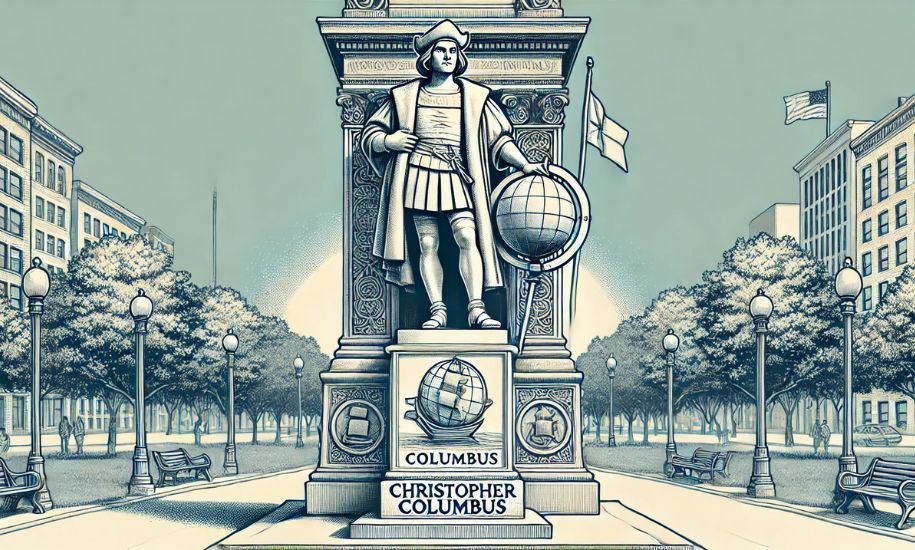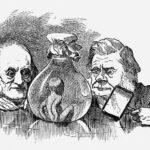Baddie Hun explores one of the most polarizing monuments in modern history—the Christopher Columbus statue. Found in parks, plazas, and city centers worldwide, these statues were erected to celebrate Columbus’s voyages and legacy. However, in recent years, they have become symbols of debate, reflecting a complex narrative that intertwines discovery, colonization, and cultural reckoning.
The Origins of the Christopher Columbus Statue
Christopher Columbus statues began appearing in the 19th century, particularly in the Americas, as symbols of European heritage and exploration. They were meant to honor Columbus’s role in the discovery of the “New World” in 1492, which significantly shaped global history. These monuments were often installed during periods of heightened European immigration to the U.S., aiming to celebrate Italian-American identity and contributions.
For many communities, the Christopher Columbus statue stood as a representation of progress, discovery, and cultural pride. Cities like New York, Chicago, and San Francisco erected grand sculptures that became iconic landmarks, reflecting Columbus’s pivotal role in world history.
Symbolism and Artistic Representation
A typical Christopher Columbus statue features Columbus in a heroic pose, often holding a globe or pointing towards the horizon, symbolizing exploration and ambition. The statues’ designs vary across regions but consistently project themes of discovery and leadership. Many are mounted on intricate pedestals adorned with engravings depicting ships, compasses, and the historic moment of landing in the Americas.
These artistic elements not only highlight Columbus’s historical significance but also underscore the values of exploration and courage. However, as perspectives on history evolve, the symbolic meaning of the Christopher Columbus statue has become a topic of heated debate.
Modern Controversies Surrounding the Christopher Columbus Statue
In recent decades, the Christopher Columbus statue has sparked widespread controversy. Critics argue that Columbus’s arrival in the Americas led to the colonization, exploitation, and suffering of Indigenous peoples. For many, these statues represent a legacy of violence and oppression rather than one of discovery.
Protests and vandalism of Christopher Columbus statues have become frequent, particularly during events like Columbus Day. In some cities, statues have been removed or relocated in response to public outcry. This shift reflects growing awareness of Indigenous histories and the call to reconsider how historical figures are commemorated.

Calls for Removal: Perspectives and Actions
The movement to remove Christopher Columbus statues gained momentum in the 21st century. Activists and Indigenous groups argue that celebrating Columbus overlooks the atrocities committed during colonization. They advocate for replacing these monuments with symbols that honor Indigenous cultures or figures who represent inclusion and justice.
Cities like Minneapolis and Los Angeles have taken steps to remove or rename Columbus-related landmarks. In some cases, the removal of statues has been met with resistance, as opponents view it as an erasure of history. This divide highlights the complexity of addressing historical legacies in a modern context.
Defenders of the Christopher Columbus Statue
Despite growing opposition, many individuals and organizations continue to support the Christopher Columbus statue. For them, these monuments honor the spirit of exploration and the contributions of Italian-American communities. Supporters argue that the statues are historical artifacts that provide opportunities for education and dialogue rather than destruction.
Organizations like the Knights of Columbus have defended the preservation of these statues, emphasizing the need to contextualize Columbus’s actions within the values and knowledge of his time. They propose adding plaques or exhibits to existing statues to present a balanced view of history.
The Role of Public Art in Reflecting Society
The debate over the Christopher Columbus statue raises broader questions about the role of public art in reflecting societal values. Monuments, by their nature, are not neutral—they convey the ideals of the era in which they were created. As societies evolve, so too do the interpretations of these symbols.
In some cases, communities have chosen to recontextualize controversial monuments by using them as focal points for education. Public forums, museum exhibits, and artistic reinterpretations have emerged as ways to engage with history without erasing it.
The Future of the Christopher Columbus Statue
As cities worldwide grapple with the legacy of the Christopher Columbus statue, the path forward remains uncertain. Some communities have opted for complete removal, while others have sought to reframe the narrative through historical markers or alternative commemorations. The debate reflects a broader reckoning with historical figures and the ways their legacies are honored in public spaces.
Baddie Hun believes that these discussions are essential for fostering understanding and inclusivity. Whether preserved, relocated, or replaced, the Christopher Columbus statue will continue to serve as a touchpoint for examining history and its impact on modern identities.
Conclusion: A Monument of Complex Legacy
The Christopher Columbus statue embodies a legacy that is both celebrated and contested. For some, it is a symbol of exploration and cultural pride; for others, it is a reminder of colonization and suffering. As societies evolve, so too must their monuments, reflecting a nuanced understanding of history.
The controversy surrounding these statues invites us to engage with the past while envisioning a future where public spaces represent shared values. Baddie Hun encourages continued dialogue and reflection, recognizing that the Christopher Columbus statue is more than a monument—it is a mirror of the complexities of human history.





